The week at a glance
- Slaty-backed Gull still in London and Essex
- Oriental Turtle Dove still in Oxfordshire
- Pacific Diver still in Cornwall
- American Coot still in Co Mayo
- House Crow still in Co Cork
Most of last week's megas hung round into this week, but none became any more accessible. Perhaps causing most controversy was the adult Slaty-backed Gull, which was again sporadically reported from Rainham Marshes (London) on 24th–26th. It never showed particularly well and there was continued discussion over whether it was actually there at all, though knowing the behaviour of gulls on these tips, a fleeting visit would be nothing new.
Slightly more accessible was the Oriental Turtle Dove that remained in Chipping Norton (Oxfordshire) all week. Access to kitchens and gardens became more restricted as the novelty wore off for residents, partly fuelled by the selfish few continuing to park in The Leys, despite repeated requests not to do so. Not wanting to be overshadowed, Norfolk's wintering Turtle Dove, at Roydon, was reported again on 26th.

Oriental (Rufous) Turtle Dove, Chipping Norton, Oxfordshire (Photo: Rob Smallwood)
As last week, the only Pacific Diver reported was the bird off Penzance and Marazion (Cornwall), and other long-staying megas still in residence included the American Coot at Termoncarragh Loch (Co Mayo) and the House Crow in Cobh (Co Cork).
Ireland stole the Snow Goose show this week, with birds at Aghagallon (Co Antrim) on 24th, Termoncarragh Loch (Co Mayo) on 26th and Portmore Lough (Co Antrim) on 28th. As might be expected, both Ross's Geese were again reported, at Halvergate Marshes (Norfolk) to 25th (and possibly the same at Holt on 26th) and Caerlaverock (Dumfries & Galloway) to 26th.

Ross's Goose, Caerlaverock WWT, Dumfries & Galloway (Photo: Chris Baines)
The week saw up to three Black Brants now at Ferrybridge (Dorset), on 24th, with singletons also at Holme next the Sea (Norfolk) on 24th, Gillingham (Kent) on 28th and Wexford Wildfowl Reserve on 28th. The colour-ringed Red-breasted Goose, of presumed feral origin, remained at Keyhaven Marshes (Hampshire) to 24th, though what is presumed to be the same bird was back at Starcross (Devon) on 28th, 120km distant. Does it really commute so often? The only interesting Canada Goose was the Richardson's that remained at Loch Gruinart, Islay (Argyll) on 23rd–27th.
Apart from the drake Ferruginous Duck at Oulton Broad (Suffolk) all week, the only other was at Lurgan (Co Armagh) on 24th–26th. Numbers of most ducks are really dropping now, and there were just four Ring-necked Ducks this week: the drake remained on Carrowmore Lake (Co Mayo) to at least 27th, with others on a private lake at Stithians (Cornwall) on 26th, at Portaferry (Co Down) on 27th and on Loch Ospisdale (Highland) on 28th.
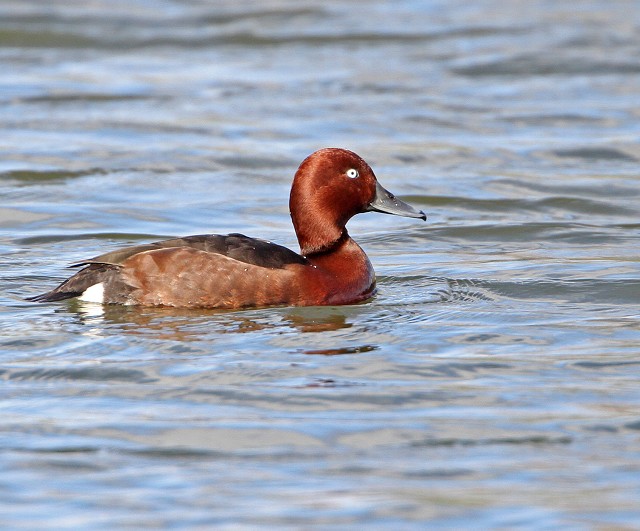
Ferruginous Duck, Oulton Broad, Suffolk (Photo: Ian Clarke)
The same could be said of Green-winged Teal, with birds at just four sites. Irish birds were in Killala Bay (Co Mayo) on 26th (presumably the bird last reported there in November 2010) and two were at Tacumshin (Co Wexford) on 26th–2nd. The drake also remained at Bowesfield Marsh (Cleveland) to 1st and one was at Campfield Marsh (Cumbria) on 2nd. Also making a reappearance this week was the drake Black Duck at Achill Island (Co Mayo), present on 27th–28th. Oxfordshire's drake American Wigeon was at Rushy Common near Witney to at least 1st.
Nothing much changed with Lesser Scaup either, with the standard birds at Slimbridge (Gloucestershire) and Dozmary Pool (Cornwall) and the female remaining at Eglwys Nunydd Reservoir (Glamorgan) to 25th. Various Aythya hybrids also made life interesting, including a Tufted Duck × Pochard at Alexandra Park (London) on 24th.
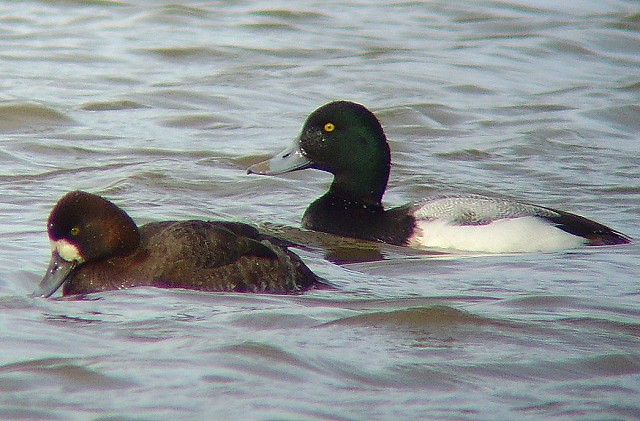
Lesser Scaup, Slimbridge WWT, Gloucestershire (Photo: Tom)

Lesser Scaup, Slimbridge WWT, Gloucestershire (Photo: Richard Smart)

Aythya hybrid, Alexandra Park, Greater London (Photo: Richard Jones)
Apart from the female Surf Scoter sticking it out at Dawlish Warren (Dorset), the only others were again in Co Clare, with a drake and female at Doughmore on 24th. Interestingly, there were no reports of any rare eiders this week, the first time this winter. Bucking the general duck trend were Smew, with good numbers still at 44 widespread sites. The only double-figure counts were 11 at both Dungeness (Kent) and Needingworth Quarry Lakes (Cambridgeshire). In Wales, the redhead remained at Valley Lakes Anglesey) to 25th and another was at Shell Island (Gwynedd) on 28th. The only Irish bird was a redhead at Quoile Pondage (Co Down) on 26th.
There was another rush of records of Balearic Shearwaters this week, with birds past four different Cornish sites on 24th and 26th, peaking at four past Pendeen on 24th. There were also up to eight Manx Shearwaters seen, along with 12 Great Northern Divers and two Puffins.
The six Great White Egrets were still being seen at Ham Wall/Shapwick Heath (Somerset), with two at Pitsford Reservoir (Northamptonshire) and others remaining at Kirkby on Bain (Lincolnshire) and Hoveringham (Nottinghamshire). One at Marlingford (Norfolk) from 26th was popular, and other new birds were at Blithfield Reservoir (Staffordshire) on 27th–1st and Harper's Island (Co Cork) on 2nd. The early spring run of Cattle Egrets continued, with two at Alderholt (Dorset) on 24th, two at Fordingbridge (Hampshire) on 27th, one at New Bridge (Devon) to 28th and another brief bird at Shapwick Heath (Somerset) on 26th.
Small pockets of Spoonbills were reported from 12 sites, with up to eight at Arne (Dorset) and others in Cornwall, Devon, Somerset, Gloucestershire and Norfolk. The only inland bird was at Rutland Water on 26th, and the only birds northwest of a line from the Severn to the Wash were singletons at the National Wetlands Centre (Carmarthenshire), Cromane (Co Kerry) and Courtmacsherry (Co Cork).

Spoonbill, Amble Marshes, Cornwall (Photo: Colin Selway)
Away from Norfolk, where up to three remained, and Shetland, where two remained, Rough-legged Buzzards were reported from just four sites in South Yorkshire, Lincolnshire and Durham, with another possible at Clumber Park (Nottinghamshire) on 1st. The distant photograph from last week was confirmed as the relocating White-tailed Eagle, present and showing well at times around Old Basing (Hampshire) from 24th to the week's end.
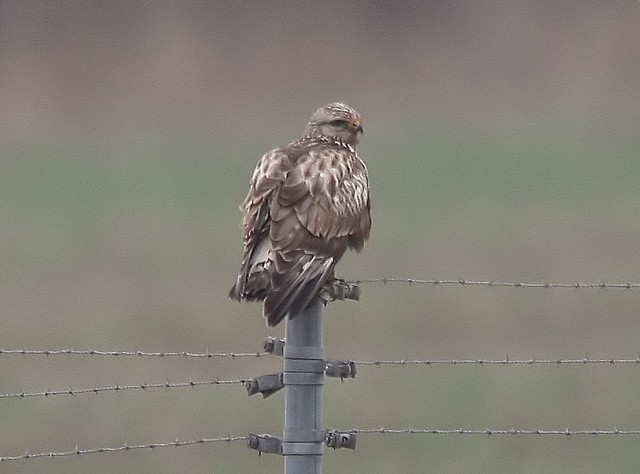
Rough-legged Buzzard, South Ferriby, Lincolnshire (Photo: Dave Hutton)
Also staying put were at least two Northern Harriers, one still at Thornham and Brancaster Staithe (Norfolk) and another again around Loch Barvas, Lewis (Outer Hebrides) on 27th and 1st. The possible Tundra Peregrine was at Walmsley Sanctuary (Cornwall), reported on two dates. There was just one report of Black Kite this week, a possible at Poole (Dorset) on 25th.
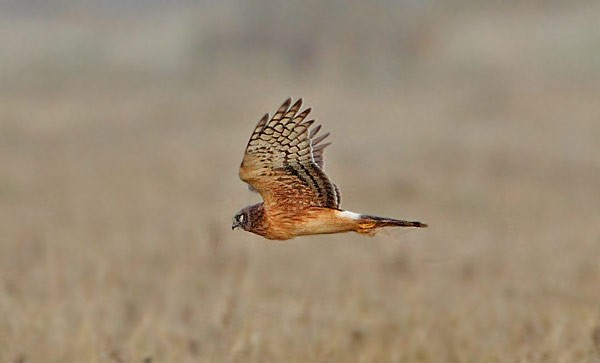
Northern Harrier, Thornham, Norfolk (Photo: Gary Thoburn)
Dorset's Long-billed Dowitcher almost stayed in one place this week, present mostly at Lodmoor, but couldn't resist a quick trip to Radipole Lake on three occasions. Other waders of note included an impressive 2,700 Black-tailed Godwits at Marshside RSPB (Lancashire) on 28th.
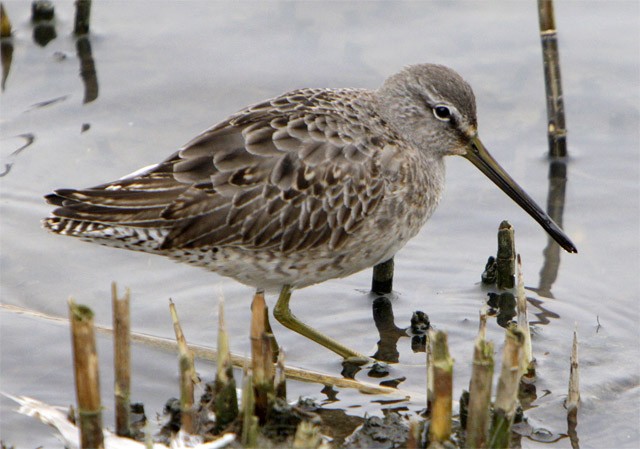
Long-billed Dowitcher, Radipole Lake RSPB, Dorset (Photo: Eldwyth)
The shift to the south and west of Ring-billed Gulls continued, with English birds in Essex, Somerset, Dorset and Cornwall. There was then just one in Wales, at Newborough Warren (Anglesey) on 1st–2nd, and birds at 12 sites in Ireland. These included three adults at Nimmo's Pier (Co Galway) on 24th and an adult and first-winter in Sligo on 26th.

Ring-billed Gull, Cuskinny Marsh, Cork (Photo: Ronan McLaughlin)
Glaucous Gulls were still very widespread, though, with birds reported from at least 27 sites, most of which were inland. All were singletons apart from two past Flamborough Head (East Yorkshire) on 24th. One at Richmond Bank (Cheshire) on 25th was with an Iceland Gull, two Caspian Gulls and nine Yellow-legged Gulls. Other reports of Iceland Gull came from 33 sites, all of singletons, including six in Ireland. Just two of last week's Kumlien's Gulls remained, the first-winter at Sligo (Co Sligo) to 26th and the third-winter in Lerwick Harbour (Shetland) to 27th. The only other gulls of note were the adult American Herring Gull in Galway Docks on 26th, a possible Azorean Yellow-legged Gull at Pendeen (Cornwall) on 25th and the returning adult Bonaparte's Gull at Lligwy Bay (Anglesey) all week. Also in Ireland, the Forster's Tern was reported again at Doorus (Co Galway) on 28th.

Iceland Gull, Stranraer, Dumfries & Galloway (Photo: Chris Baines)
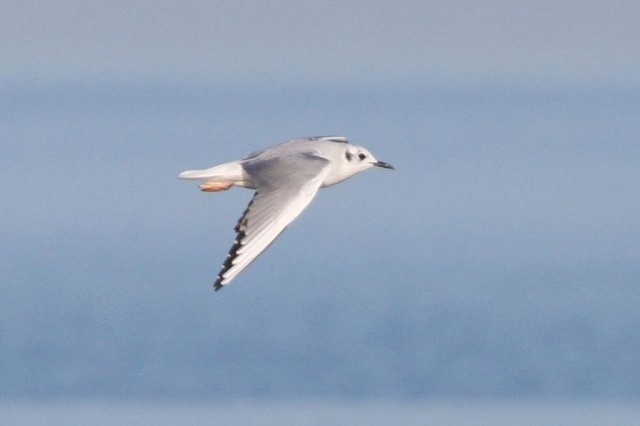
Bonaparte's Gull, Lligwy Bay, Anglesey (Photo: Steve Culley)
There were a few reports of Snowy Owls this week, with the wintering bird at Mangurstadh, Lewis (Outer Hebrides) on 25th and reports of others at Stromness (Orkney) and Ballycastle (Co Mayo) both on 2nd.
As spring creeps ever closer, small groups of Shore Larks hung on at various sites, with 10 at Cley Marshes (Norfolk), 10 at Dingle Marshes (Suffolk) and three at Reculver (Kent). With the Lancashire bird departed, you have to wonder if it was the one with Linnets at Nosterfield Quarry (North Yorkshire) from 25th–27th.

Shore Lark, Cley Marshes NWT, Norfolk (Photo: Ian Curran)
Most of the week's Waxwings were concentrated in quite a tight line along the centre of the UK, from Glasgow through to London and down into Hampshire. Away from this core area, birds were surprisingly scarce, with just one in Wales, at Blaenau Ffestiniog (Gwynedd) on 27th, and two groups in Northern Ireland: four at Larne (Co Antrim) on 23rd and 17 still in Belfast (Co Antrim). The furthest north were three at Daviot (Highland) on 24th. Triple-figure counts included an unspecific "hundreds" at Mansfield (Nottinghamshire), 150 in Littleover (Derbyshire), 136 in Reading (Berkshire), 130 in Watford (Hertfordshire), 114 in Datchet (Berkshire), 108 in Poole (Dorset) and 100 in Stockport (Manchester).
Away from a cluster of records in Dorset and Hampshire, there were Great Grey Shrikes at around 19 sites across the country, with three in Scotland and four in Wales. Cornwall's first-winter Rose-coloured Starling remained in a Penzance garden all week.
Coues' Arctic Redpolls were concentrated in the northeast this week, with at least one still at Rainton Meadows (Durham) to 26th, one with over 70 Common Redpoll at Allerthorpe Common (East Yorkshire) to 28th and a new bird at Bowesfield Marsh (Cleveland) on 1st.
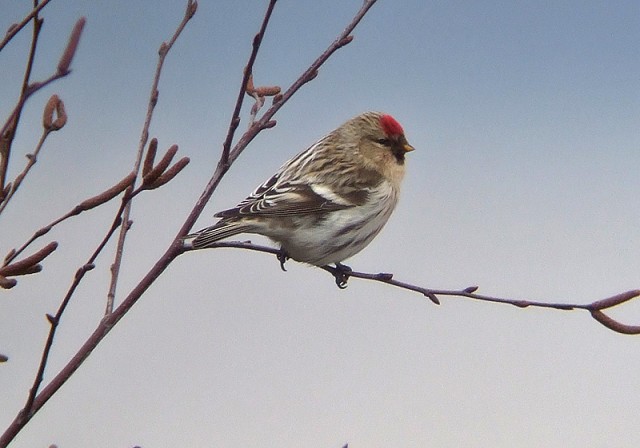
Coues' Arctic Redpoll, Rainton Meadows DWT, Durham (Photo: Gary Woodburn)
It seems that Lapland Buntings are really concentrating now in tight flocks, with some big counts this week. Over 100 were at Port Isaac (Cornwall) from 26th and 103 were at Flamborough Head (North Yorkshire) during the week. Elsewhere, up to 32 were still at Weybourne (Norfolk), with 20 at Buckton (East Yorkshire) on 27th and singletons at Caerlaverock (Dumfries & Galloway) and Christchurch Harbour (Dorset) on 28th. The three inland Snow Buntings at Baildon Moor (West Yorkshire) remained all week.

Snow Bunting, Baildon Moor, West Yorkshire (Photo: Barry Nield)
The Northern Long-tailed Tit flock at Dymchurch (Kent) was back up to four this week, and in Co Louth the Central Asian Lesser Whitethroat remained at Drogheda all week. The only reports of Northern Jackdaws were singletons at Keele (Staffordshire) on 28th and at Kilmacthomas (Co Waterford) on 1st.
Photo of the Week: 24th February–2nd March 2011

Crested Tit, undisclosed site, Highland (Photo: Marcus Conway - ebirder)
Marcus Conway's bird photography is consistently of the highest standard and is very well regarded among our photo gallery viewers and, of course, our staff. This week, Marcus has uploaded a number of tasty delights from the Scottish Highlands, including Black Grouse and some high-altitude Ptarmigan. Our favourite, though, is this cheeky portrait of a Crested Tit perched on a deer antler. The use of such props is not to everyone's taste but, in this case, the image has been conceived and executed so well that few people could fail to appreciate the results. Marcus' positioning of the antler along the left side of a vertical frame sets up a simple, powerful composition that benefits from the small size of the bird in the frame. As well as a perfectly obliging subject, the image is nicely rounded off by a natural, diffuse background. This is a good example of where a small amount of the right background detail can be more interesting and appealing than a completely uniform backdrop. Classic magazine cover material!
Other notable photos

Australasian Gannet, New Zealand (Photo: David Greaves)
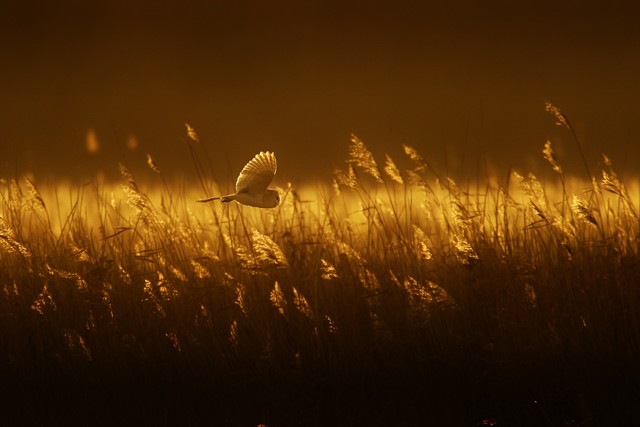
Barn Owl, undisclosed site, Norfolk (Photo: Nigel Pye)

Great Crested Grebe, undisclosed site, Lancashire (Photo: David Cookson)

Ptarmigan, Glenshee Ski Centre, Aberdeenshire (Photo: John Anderson)

Wallcreeper, France (Photo: Nigel Raby)

Lesser Kestrel, Spain (Photo: Steve Fletcher)

Whimbrel, Gambia (Photo: Dave Williams)

Sparrowhawk, Llandrindod Wells, Powys (Photo: Kev Joynes)
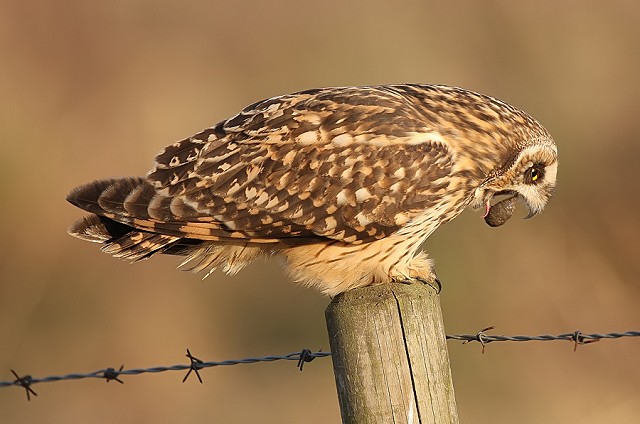
Short-eared Owl, Worlaby Carrs, Lincolnshire (Photo: Dave Hutton)

Herring Gull, Portrush, Antrim (Photo: Ian Dickey)
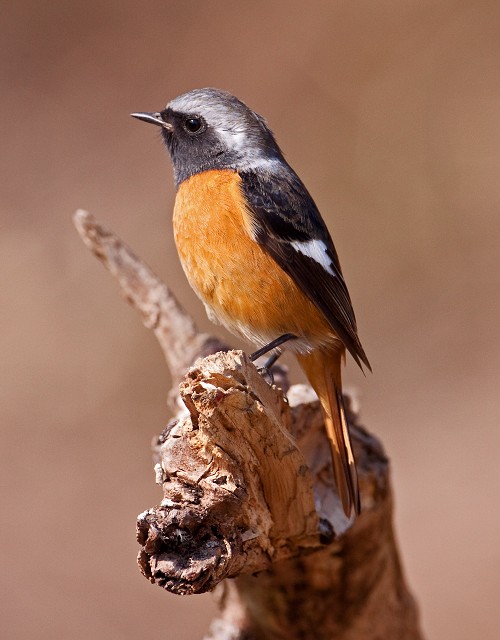
Daurian Redstart, Japan (Photo: Mark Curley)

Black Grouse, undisclosed site, Clyde (Photo: Jim Duncan)

Nuthatch, undisclosed site, Staffordshire (Photo: Karen Summers)

Common Kingfisher, undisclosed site, Northumberland (Photo: Keith Cochrane.)

Grey Heron, Roslin, Lothian (Photo: Mike Thrower)

Bullfinch, Wayoh Reservoir, Lancashire (Photo: John Barlow)

Osprey, Australia (Photo: Clive Nealon)

